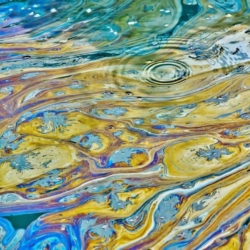Produced water is wastewater that is generated as a byproduct of oil and gas production. It is the water that comes to the surface with the extracted oil and gas. Produced water often has a high concentration of dissolved salts, heavy metals, organic compounds, and naturally occurring radioactive materials.
Due to its potentially harmful effects on the environment and public health, produced water needs to be properly managed and treated before it can be discharged or reused. Usually there are four ways to produced water treatment and purification:
Nutshell Filtration: The process of nutshell filtration involves passing the water or fluid through a bed of crushed nutshells. As the fluid passes through the nutshells, the impurities are trapped by the irregular shapes and rough surfaces of the nutshells. Advantages of nutshell filters:
- High contaminant removal efficiency: They can remove a wide range of contaminants, including oil, grease, suspended solids, and some dissolved contaminants.
- Handling a high volume of water flow
- Relatively low maintenance

IGF (Induced Gas Flotation): IGF separators operate by introducing fine gas bubbles into the produced water stream, which attach to the oil droplets and solid particles, causing them to float to the surface. The IGF separator typically consists of a flotation chamber, a gas injection system, and a skimming device. IGF separators are effective in removing both free oil and smaller oil droplets, as well as suspended solids, from produced water. However, IGF separators may require chemical additives or coagulants to enhance the flotation process and improve separation efficiency.
API separator (American Petroleum Institute Separator): API is a type of gravity-based oil-water separator, consists of a large rectangular or circular vessel with several compartments. API separators are commonly used as a primary treatment step and are often followed by secondary treatment processes for further purification.
CPI separator (Corrugated Plate Interceptor Separator): It works on the principle of coalescence, where oil droplets and solids in water collide and adhere to corrugated or parallel plates in the separator. Purified water is discharged through the top or center outlet of the separator. CPI separators are often used as a primary or secondary treatment step, depending on the specific application and water quality requirements.
All of these separators are widely used in the oil and gas industry for the treatment of produced water, refinery wastewater, and other industrial wastewater streams. The selection of the appropriate separator depends on factors such as the flow rate, oil and solids content, required effluent quality, and available space for installation.
